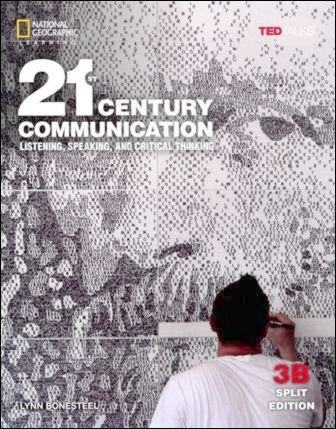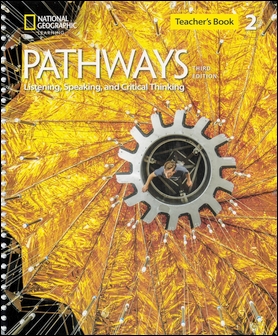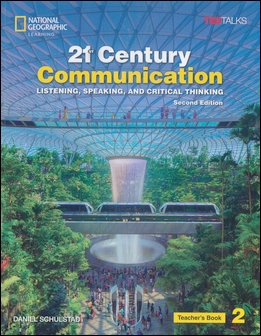書籍分類

Public Speaking Matters (International Student Edition)
作者:Kory Floyd
原價:NT$ 1,250
ISBN:9781259253911
版次:1
年份:2015
出版商:McGraw-Hill
頁數/規格:431頁/平裝彩色
版次:1
年份:2015
出版商:McGraw-Hill
頁數/規格:431頁/平裝彩色
內容介紹 本書特色 目錄
- Description
Skills for Life, Not Just for School
Public Speaking Matters provides the essential skills that today’s diverse student population needs and teaches them that adapting to the situation is crucial to speaking success across all segments of their lives. Students learn that adaptability does not mean changing their messages to suit what they believe the audience wants to hear. Instead, successful public speakers adapt to the audience, to the occasion, and to the situation at hand.
Combining Connect Public Speaking and LearnSmart’s adaptive suite of resources with highly relevant, student-focused content, Public Speaking Matters helps students develop the confidence and skills they need to become effective public speakers.
- Features
- “Prepare to Succeed” sections. Every chapter concludes with a “Prepare to Succeed” overview, offering concrete suggestions for building the skills covered in that chapter.
- A focus on adaptability. In support of the goal of developing students’ knowledge base and competence in essential public speaking skills, the handbook includes five recurring “Adapt to . . .” boxes: “Adapt to Culture” boxes develop students’ ability to address listeners with differ¬ing cultural backgrounds and languages. “Adapt to Technology” boxes build students’ proficiency in using technology to develop and execute effective speeches. “Adapt to Ethics” boxes present a spectrum of ethical challenges that com¬petent speakers must successfully address. “Adapt to Anxiety” boxes offer strategies for transforming stage fright into a positive, energizing force. “Adapt to Context” boxes give practical tips for analyzing the speaking situation and audience need and responding effectively to both.
- Videos of student speeches on Connect Public Speaking. Nine full student speeches (of major speech genres), as well as nearly fifty Mastery Clips, illustrate specific skills and concepts from the text. Fifteen Needs Improvement Clips highlight common challenges faced by beginning speakers.
- “Live Work Speak” boxes present short application scenarios from the workplace and other real-life situations, asking students to contemplate the choices they might make at a given decision point.
- Annotated student speech examples, both within certain chapters and in the appendix, walk readers through different steps of the public speaking process, demonstrating public speaking skills in action.
- Connect Public Speaking provides a wealth of resources—engaging activities and powerful public speaking tools—to help students practice and become more effective public speakers, to address key course challenges, and to boost student performance. (For details about these resources, see below.)
- LearnSmart, McGraw-Hill’s adaptive learning system, assesses students’ knowledge of course content and maps out dynamic, personalized study plans that ground stu¬dents in the fundamental concepts of communication. Available within Connect Public Speaking, LearnSmart uses a series of adaptive questions to pinpoint the con¬cepts students understand, as well as those they don’t. The result is an online tool proven to help students learn faster, study more efficiently, and improve their performance.
- SmartBook, McGraw-Hill’s adaptive ebook, facilitates the reading process by identifying what content a student knows and doesn’t know, highlighting the concepts that are most important to that study session. As a student reads, the material continually adapts to ensure the student is focused on the content he or she needs the most to close specific knowledge gaps.
- SmartBook Reports provide students and instructors with real-time information about individual and class performance and understanding, keeping students and instructors fully up to date on course progress.
- LearnSmart Achieve. takes learning one step beyond SmartBook and offers a digital learning environment that teaches students to apply the skills of the public speaking course. LearnSmart Achieve focuses on crucial study skills, such as time management, and creates a personalized learning experience tailored to students’ skill levels. Using questions to identify what students don’t know, LearnSmart Achieve provides on-the-spot tutoring utilizing learning resources, such as videos, detailed artwork, a narrative coach, other visual aids, supplemental reading, or a combination of all these tools.
-
Resources and tools available within Connect Public Speaking:
- Assessments to gauge student comprehension of core concepts.Connect Public Speaking for Public Speaking Matters provides pre- and post-tests as well as test bank questions for every chapter.
- Speech Capture. Connect's Speech Capture gives instructors the ability to evaluate speeches live, using a fully customizable rubric. Instructors can also upload speech videos on behalf of students, as well as create and manage peer review assignments. In addition, students can upload their own videos for self-review and/or peer review.
- Outline Tool, with enhanced user interface. The Outline Tool guides students systematically through the process of organizing and outlining their speeches. Instructors can customize parts of the outliner, and also turn it off if they don't want their students to use it.
- Topic Finder, as well as access to EasyBib and SurveyMonkey online tools. The Topic Finder helps students select a topic for speech assignments. EasyBib is a Web-based tool that simplifies and automates the formatting of citations and bibliographies. SurveyMonkey, also a Web-based tool, helps students create and manage audience-analysis questionnaires.
- McGraw-Hill SpeechPrep app. On-the-go students can create and organize note cards, as well as practice, record, time, and review speeches on their Apple- or Android-based smartphones or tablets using the mobile McGraw-Hill SpeechPrep app. To learn more or download the app, go to www.mhhe.com/speechprep/ or search "Speech Prep" in iTunes, the App Store, or the Android Market.
- Table of Contents
PART 1 The Practice of Public Speaking
1 Adapt for Speaking Success
2 Manage Speech Anxiety
3 Practice and Promote Effective Listening
4 Speak Ethically
PART 2 Getting Started with Your Speech
5 Know and Adapt to Your Audience
6 Determine Your Purposes and Select a Topic
PART 3 Supporting Your Speech
7 Locate Supporting Materials
8 Evaluate Supporting Materials
9 Cite Sources in Your Speech
PART 4 Organizing and Developing Your Speech
10 Outline Your Speech
11 Organize the Body of Your Speech
12 Introduce and Conclude Your Speech
13 Use Language Expertly
PART 5 Forms of Speeches
14 Speak to Inform
15 Speak to Persuade
16 Practice Persuasiveness
17 Speak in Small Groups
18 Speak on the Job
19 Speak on Special Occasions
PART 6 Presenting Your Speech
20 Choose and Rehearse a Method of Delivery
21 Use Your Body and Voice Effectively
22 Use Presentation Aids Effectively







